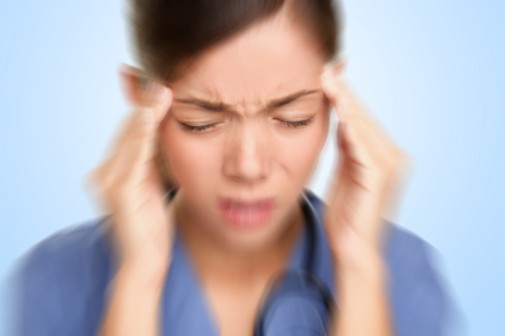What turns acute migraines into a chronic problem?

Migraines are a widespread problem that affect more than 30 million Americans, according to the National Headache Foundation.
A recent study, developed by a group of researchers from Albert Einstein College of Medicine, Montefiore Headache Center, Vedanta Research and Allergan, Inc., found that people who suffer from acute migraines are more likely to develop chronic migraines if they receive inadequate treatment.
The study looked at data from more than 4,600 people suffering from migraines, and found that 48 percent received poor treatment. Of these patients, 12.4 percent developed chronic migraines within the year.
On the flip side, patients who received moderate to the best treatment only had a 5.4 percent chance to develop chronic migraines.
Dr. Jeffrey Weinzweig, a board certified plastic surgeon and member of Advocate Physician Partners, recommends that migraine sufferers seek proper medical attention before the problem worsens.
What is a migraine?
According to the International Headache Society, migraines differ from headaches based on the number of attacks that are diagnosed—(a minimum of five within a four to 72-hour period) as well as the level of the severity of pain caused.
“A migraine is usually described as an intense throbbing pain in one specific area of the head,” says Dr. Weinzweig.
He says migraines typically have the following symptoms:
- Nausea and/or vomiting
- Sensitivity to both light and sound
- Visual disturbances that can seem like flashing lights
- Temporary loss of vision
A different approach to treatment
Dr. Weinzweig added that early and comprehensive, often multi-pronged approaches to the treatment of migraine headaches is needed to alleviate symptoms and reduce reoccurrence and severity.
In his practice, Dr. Weinzweig performs a procedure called a sphenopalatine ganglion block, referred to as an SPG block, where an anesthetic is delivered into both nostrils to the sphenopalatine ganglion – the largest collection of nerves in the head, located outside the brain. The anesthetic reduces the release of norepinephrine, a hormone that tells your body to feel pain when nerves or tissue are damaged.
“The procedure blocks you from feeling the migraine by numbing the nerves that cause you to feel the pain,” he says.
Dr. Weinzweig says when he performs this procedure it also includes a combination of occipital nerve blocks, manual therapy, Botox treatment and, when necessary, a surgery to release the involved nerves.
“Preventative steps are also very important,” he says. “But seeking professional medical attention will better help you gain a grasp on migraines.”
Related Posts
Comments
About the Author
health enews staff is a group of experienced writers from our Advocate Health Care and Aurora Health Care sites, which also includes freelance or intern writers.

















